Tillandsia: description, types, care and reproduction
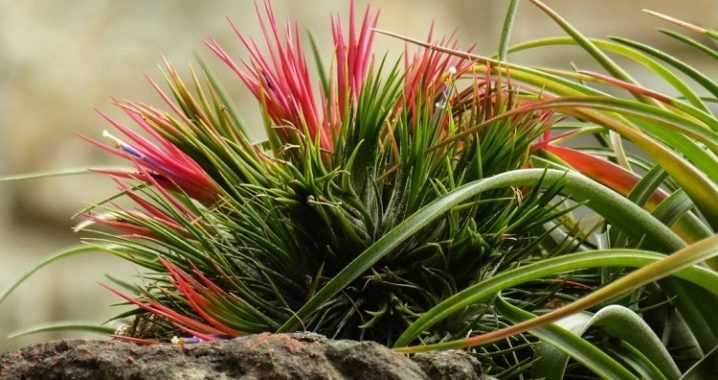
Many flower growers have recently preferred the cultivation of exotic indoor plants, as they are diverse and elegantly complement any home interior.
Among the huge selection of such flowers, tillandsia is especially popular. It is characterized by its unusual appearance and special growing conditions.
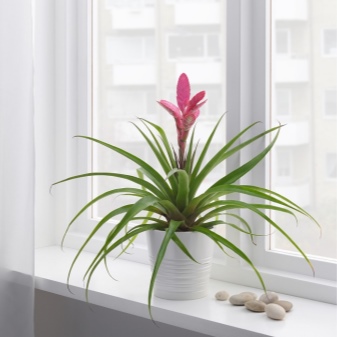
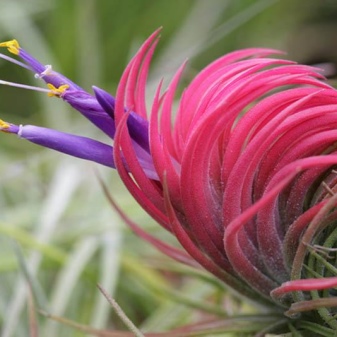
Description
Tillandsia belongs to the unique plants of the Bromeliad family. Today this indoor flower has more than 500 varieties. Its homeland is South and Central America; in the wild, the plant prefers to grow in areas with sufficient humidity and usually lives on mountain slopes, on the coasts and in humid subtropical forests. Thanks to its extraordinary appearance, the flower has become a favorite of both experienced and novice florists, as it has a huge selection of colors and shapes. There are varieties that outwardly resemble filamentous balls, bunches of colored feathers and "silvery beards."
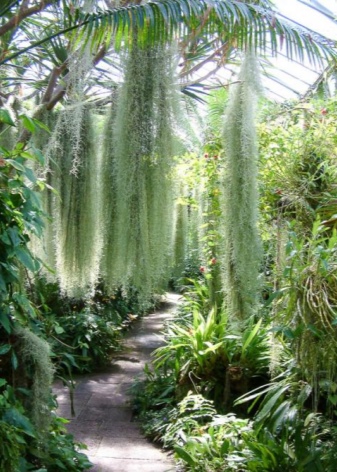
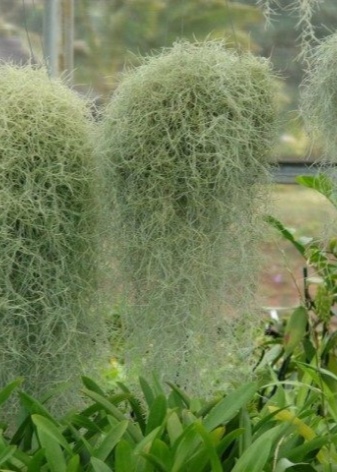
As for the general description of the plant, it is rather difficult to make it, since the "tropical guest" impresses with its originality. In our country, those varieties of tillandsia are more often in demand, which have dark green long leaves, reaching a length of up to 35 cm. They have a spike-like or scaly form of peduncles. Exotic flowers with red-chocolate and gray leaves are no less popular. It should be noted that the stem of a plant may or may not be present, it all depends on its varietal characteristics.
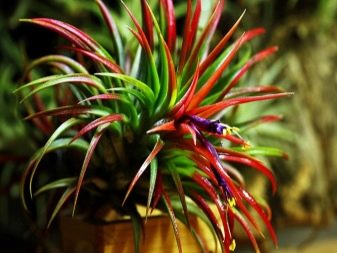
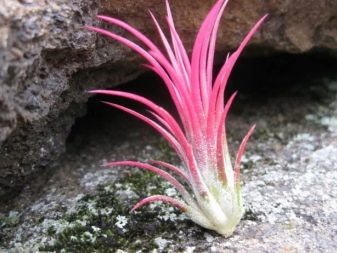
Potted tillandsias, which are a herbaceous evergreen shrub with a poorly developed root system, are excellent for home cultivation. In the process of growth, such flowers emit a massive and dense rosette, on which long wedge-shaped leaves with slightly pointed tips are formed. Every year after flowering, the maternal outlet is replenished with an increase in the form of young shoots, after which it itself then gradually dies off. Thanks to this unique ability, the plant rejuvenates itself.


From the very center of the rosette, the flower produces a peduncle with a huge inflorescence, which in shape resembles an exotic spikelet. The inflorescence is, as it were, a continuation of the line of leaves and stands out against their green background with variegation and brightness. Bracts, which hide modest and inconspicuous buds, give an interesting look to the inflorescence. The flower can be of different colors, ranging from purple, blue, pink, bright yellow, white and ending with light lilac, bright orange and fiery red. The main feature of this species is that its bracts are always "painted" in pure and radiant tones.
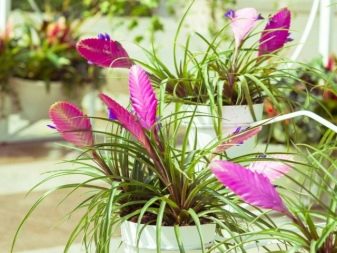
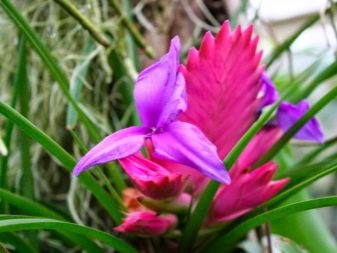
Most exotic "beauties" have an inflorescence in the form of a two-row spike. It can be both complex and simple, loose and dense. As for the stipules, they, as a rule, are arranged in a spiral or in the form of a tile masonry. Plants with one clearly expressed flower look especially beautiful in rooms. They elegantly decorate the interior of the room.
Tillandsia is grown, like all epiphytes, by placing its shoots in pots with loose soil and moss or placing them on snags.In order for the roots of a decorative flower to receive oxygen and nutrients, its roots must be well fixed on snags or tree bark. Despite the fact that an exotic plant is a little whimsical to care for, even a novice gardener can cope with its cultivation.
For this, it is important to choose the right flower variety and provide it with all the necessary conditions for growth and flowering.
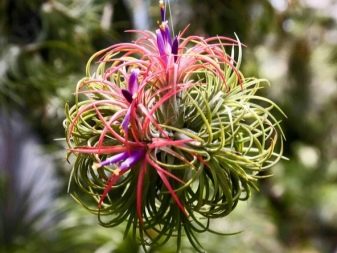

Types and varieties
While tillandsia comes in a huge variety of varieties, not all of them are suitable for home cultivation. Most often, flower growers prefer the following types.
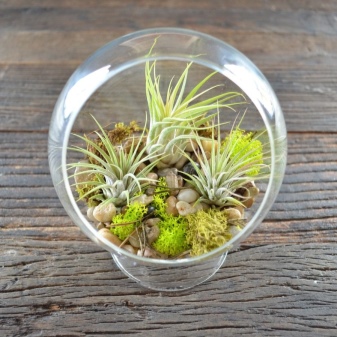
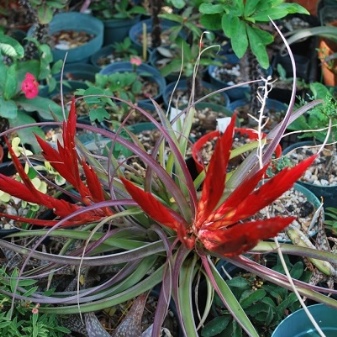
"Usneiform"
It is one of the most popular and widely used atmospheric plant species and is often referred to as the "old man's beard" or "Spanish moss". In the natural conditions of nature, the flower grows both in partial shade and in a sunny area. It has a rather thin stem 1-2 m long.The leaves of this tillandsia variety are arranged in two rows, their width is no more than 1 mm and a length of up to 5 cm.The leaves of the plant and its stem have a thick scaly coating, due to which they appear gray. It is recommended to grow this variety using any support so that the stem can descend.
If the plant is properly cared for, then in the summer it will be possible to wait for the appearance of a yellow-green bud.
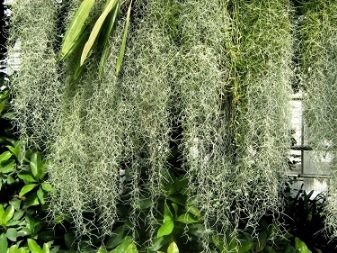
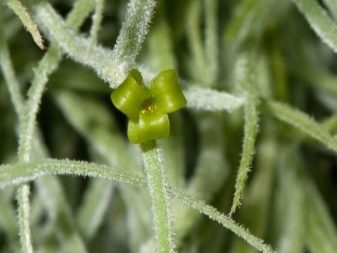
"Gardener's"
It features a large and compacted rosette, which is formed from arched leaves. The foliage of this variety acts as a "collector of moisture" coming from fog and dew, therefore, after condensation, water droplets quickly fall to the base of the stem and are absorbed by it.

"Violet flower"
It is an epiphytic plant, as it can grow and fix absolutely everywhere. The rosettes of this tillandsia are characterized by compact size, they are formed by curved silvery foliage, which usually takes on a reddish color in summer. Inflorescences are small, spike-shaped and blue-violet in color. There is also blue tillandsia.

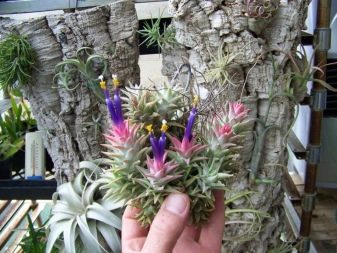
"Silver"
It is a beautiful evergreen plant, in which the leaves are distinguished by narrow plates with an extension at the base. The foliage of the flower leaves the base and is randomly collected in a curved rosette.
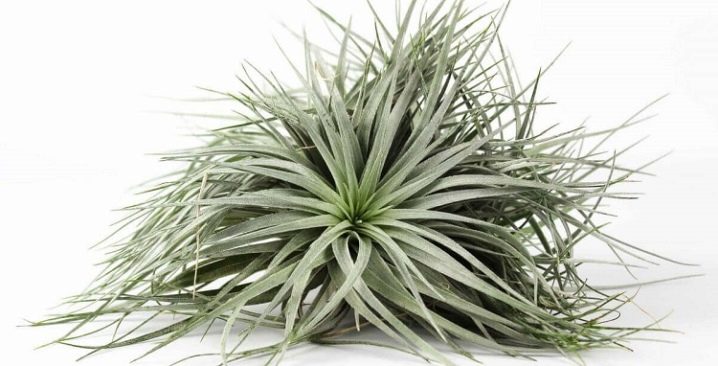
"Medusa's head"
It is considered one of the most common tillandsia varieties and is characterized by high hardiness. The main feature of the plant is its extraordinary shape, which outwardly resembles a bulb with tightly closed leaves at the base. The rosette, as a rule, "hangs upside down" and only some of its processes can branch out to the sides. During the flowering period, the exotic "guest" pleases with bright purple finger-shaped and linear buds, their length is up to 3.2 cm.
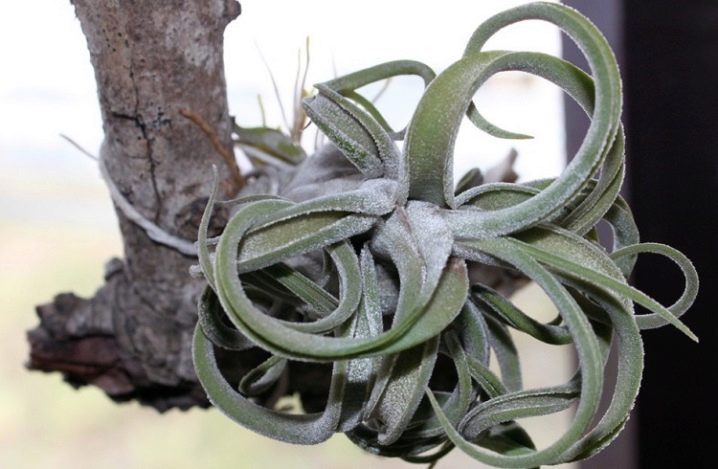
"Sitnikovaya"
The main decoration of this flower is the large leaves gathering in a bushy rosette. The length of the leaves ranges from 25 to 50 cm. When the tillandsia blooms, it is decorated with a long red-colored bract, on which small purple flowers are located.
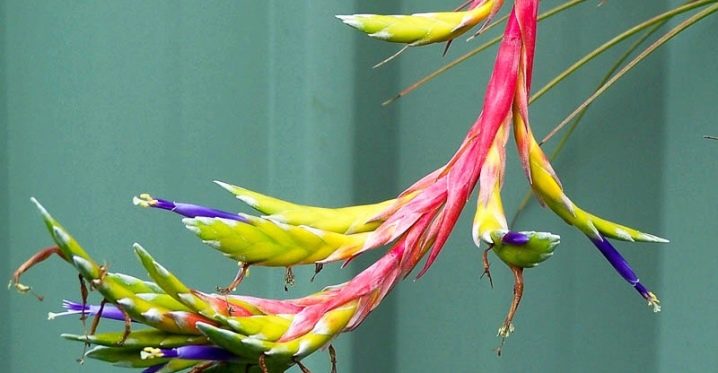
"Blue"
This variety is often found on the market. The plant is characterized by a compact rosette formed from curved narrow foliage. The length of the leaves does not exceed 30 cm. The so-called xerography, consisting of various patterns and ornaments, is placed on them. In summer, the plant begins to bloom and throws out an elliptical dense ear, along which small blue and purple flowers are located.
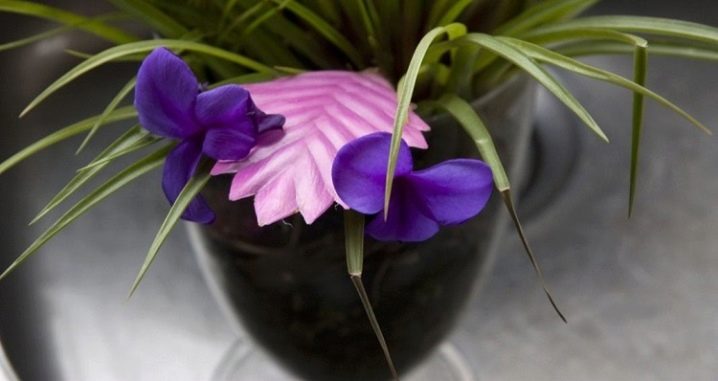
"Air"
The "airy" tillandsia deserves special attention, its main difference is that it grows without roots, entangling the trunks of trees and shrubs with a powerful stem. Of course, this type is not suitable for growing in a room, but they can adequately decorate any landscape design of a personal plot.
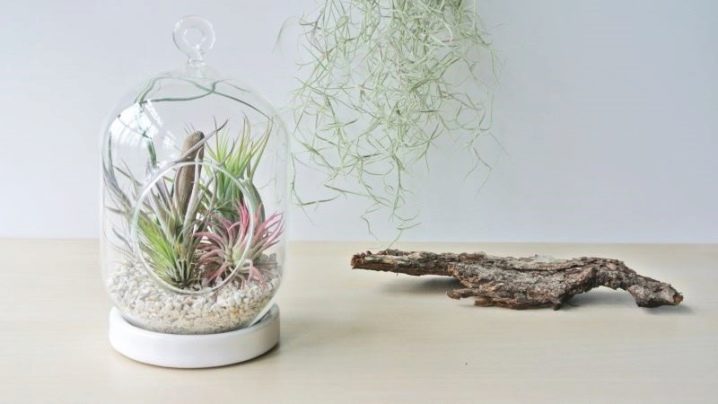
Home care
Tillandsia care may vary as it depends on the varietal characteristics of the plant.For example, terrestrial varieties are sold in pots and are distinguished by evergreen foliage. Since in the wild they love to grow in tropical forests, they will need to use special loosened soil to grow them at home. These plants can be planted both in pots, bottles and placed in a terrarium, creating original compositions for decorating a room. They love warmth and are afraid of drafts.
As for atmospheric species, they prefer to grow in cooler places. In the cold season, the optimum temperature for their growth can be no more than +14 degrees. The only thing is that such flowers are demanding on lighting, so when daylight hours are reduced (from October to the end of January), they should be provided with artificial lighting. In addition, plant pots are best placed on windowsills facing northwest or east. Flowers with gray-green leaves are perfect for partial shade or a bright place protected from the penetration of bright sunlight. Since tillandsia is used to receiving a lot of diffused lighting in natural conditions, it should be rearranged in autumn and winter to more illuminated areas.
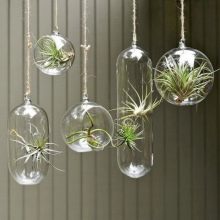
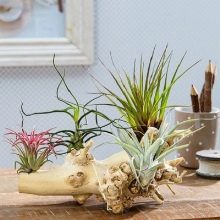
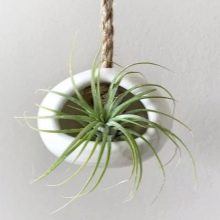
In addition, for the normal growth and development of an exotic plant, you should pay attention to the following indicators.
- Air humidity. The optimum moisture level for tillandsia is considered to be between 65 and 85%. It is not recommended to keep the plant in rooms with humidity below 60%. In addition, periodic spraying with warm water will help to provide comfort to the plant, thanks to which it will be able to additionally receive moisture and actively grow. Since in winter the air in the rooms is dry and the humidity is insufficient to keep an exotic plant, experts recommend moving it to special florariums. This will protect them from the negative effects of heating appliances.
- Watering... Spraying or submerging the planting vessel in water is suitable for all varieties of tillandsias. You cannot water the flower under the roots. In summer, the frequency of "water procedures" is increased, but if cool weather prevails in summer, then watering can be reduced. With an insufficient amount of moisture, the leaves of the plant can curl into a tube, and if this happens, then the tillandsia is immersed in water for several hours (for this, the water is defended in advance). Excessive watering will trap the water in the center of the outlet, which in turn will cause the roots to rot.
- Fertilizer... Unlike other types of ornamental plants, tillandsia grow too slowly, so it is often not worth feeding them with minerals. Usually the flower is fertilized once a month using ready-made liquid fertilizers. Atmospheric species that are planted in the bark of wood practically do not need additional feeding, since the bark in the process of decomposition releases micronutrients for them. Many experienced flower growers believe that fertilizers only harm plants of this type, therefore, it is best to abandon their use altogether. So, for example, mullein, urea and nitrogen are destructive for tillandsia, the flower can die even from their micro doses.
At the same time, fertilizers specially designed for tillandsia can be used.
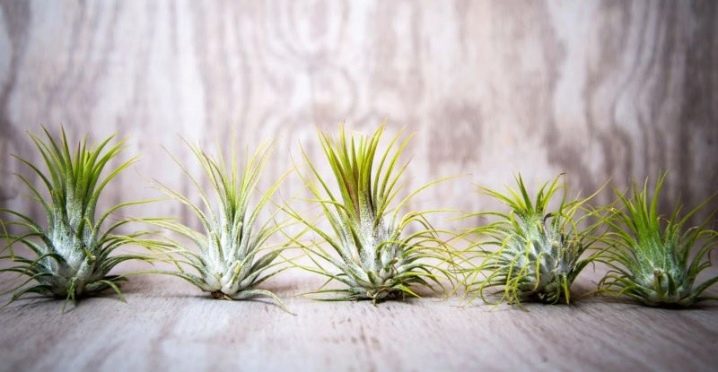
Top dressing is simple: microelements are added to the water for irrigation, they are sprayed onto a flower or poured into a container of water, where the pots are immersed. It is also important to note that tillandsias are able to independently provide themselves with the necessary trace elements.
This happens during the absorption of harmful substances in the air. After complex chemical reactions, the flower receives the required dosage of nutrients. If you take proper care of the plant, it will reward you with a healthy and chic look.
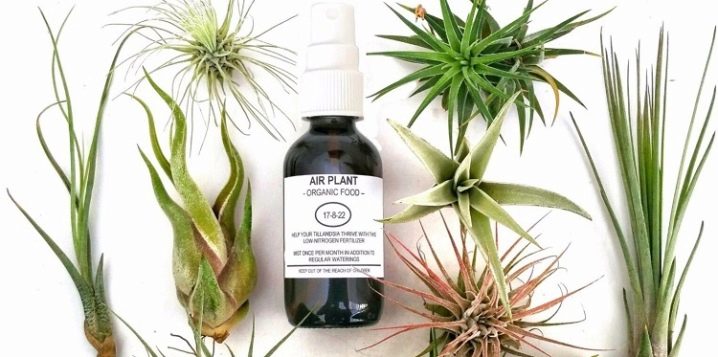
Plant propagation methods
Tillandsia can be propagated in two ways - seed and daughter rosettes. The appearance of "babies" is usually observed after flowering. On one adult bush, from 3 to 8 outlets suitable for planting can appear. To get a healthy plant, experts recommend choosing shoots for reproduction that are up to 8 cm in diameter.Do not use too weak sockets for planting, they will not take root and die. Spring or mid-summer is great for vegetative propagation.
As for the potted flower species, they reproduce mainly by seeds. It is worth noting that the seed in the nutrient soil and with proper care quickly sprouts. For this, the seeds are sown in special containers and placed under bright lighting, previously covered with glass. After a certain time, the first shoots will appear in the container.
After the leaves have formed on them, it will be possible to transplant, but the first flowering will have to wait no earlier than 10 years later.
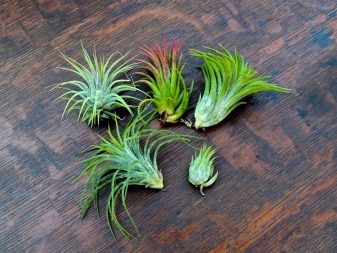
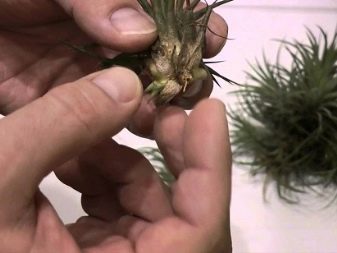
Flowering features
Tillandsias are considered the most beautiful during flowering. This period falls on the beginning of July and lasts until the end of August. On the spike-shaped peduncles, small bright tubular flowers appear. Their color can be different, ranging from white, yellow, pink and ending with purple, red and blue. The iridescent bract gives the flowers a special look. If you take care of the plant incorrectly, then it will not be able to please the owners with its flowering.

Subtleties of transplant
Immediately after buying a plant, it is undesirable to transplant; it is best to give it time to acclimatize. If the flower is bought with a formed peduncle, then it does not need to be transplanted into a new pot at all, because after flowering, the mother bush will sprout and begin to die off. Florists for transplanting usually choose two methods: without a substrate and in a substrate.
Some tillandsia varieties grow in a normal environment not in the ground, but for this they choose dense tree trunks, stones and massive driftwood. Therefore, at home, these varieties are transplanted into both bark fragments and clay granulates. River pebbles and coconut fibers are usually chosen as a planting base, since in fertile soil the plant can quickly rot.
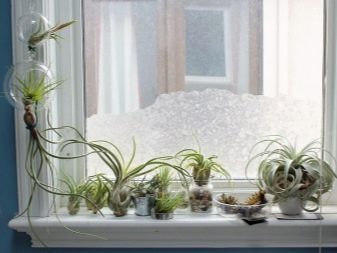
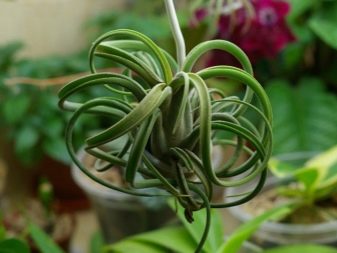
For varieties that grow in pots, it is important to choose the right container and soil before replanting. It is best to choose small and narrow containers. It is advisable to purchase the soil mixture ready-made, since it is difficult to prepare it yourself. A few hours before transplanting, the pot with the plant is placed in a container with water, then carefully, together with a lump of earth, it is moved to a new "house". Then the plant is sprayed with settled water and placed in a darkened place. When it takes root, the pot is moved to a more illuminated area of the room.
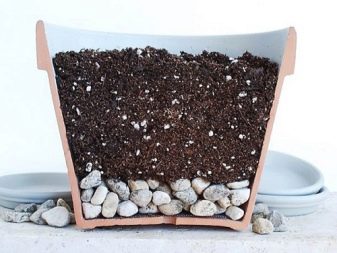
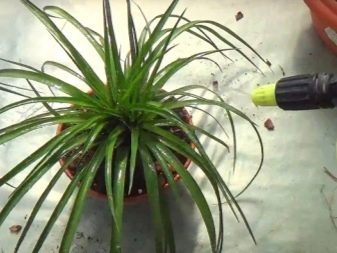
Diseases and pests
Tillandsia differ from other types of exotic plants in their high resistance to diseases and pests. But with improper care, the flower can get sick and die. So, for example, due to a lack of moisture, the foliage acquires a pale shade, curls, wrinkles, withers and crumbles. To make it green again, the pot with the plant must be placed in a container of water for a couple of hours. If the foliage has dried up, then the reason for this may be a sharp change in the conditions of its maintenance.
Flowers of this type must be placed on the windowsills on the north side of the house. This is due to the fact that exposure to bright rays of the sun can cause burns to the leaves, which then turn brown, dry and fall off.
When watering with hard water, limescale usually appears on the foliage, which can also kill the plant.
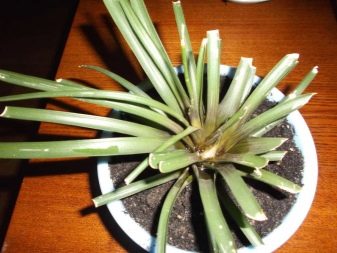
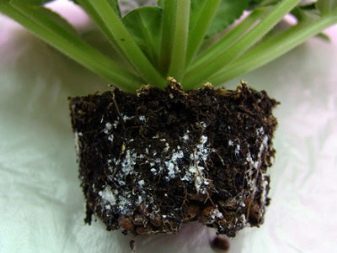
As for pests, aphids most often appear on Tillandsia. This insect is very dangerous, because it not only drinks the juice from the leaves, but is also a carrier of various diseases.As a preventive measure, the plant affected by aphids is recommended to be sprayed with citrus infusion or soapy water. It is no less dangerous for tillandsia and whitefly. When it appears on the plant, you can notice a sticky bloom on the foliage and white larvae on the shoots. If you do not fight this insect, then a soot may also appear on the flower, which will lead to its death.
In addition, mealybugs and scale insects also like to settle on an ornamental plant. Such "uninvited guests" are most often removed by hand. In addition, the flower can be sprayed with soapy water and calendula infusion.
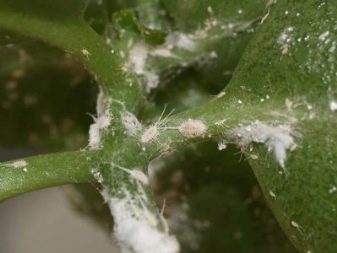
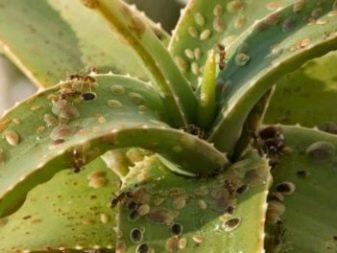
The traces that the scabbard leaves on the greenery are difficult to remove, they look like black scales and are "peeled off" only with a rag dipped in alcohol or onion infusion.
In the next video, you will find the nuances of caring for tillandsia at home.

























The comment was sent successfully.